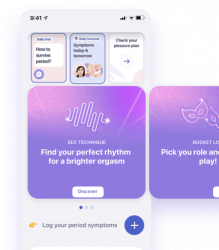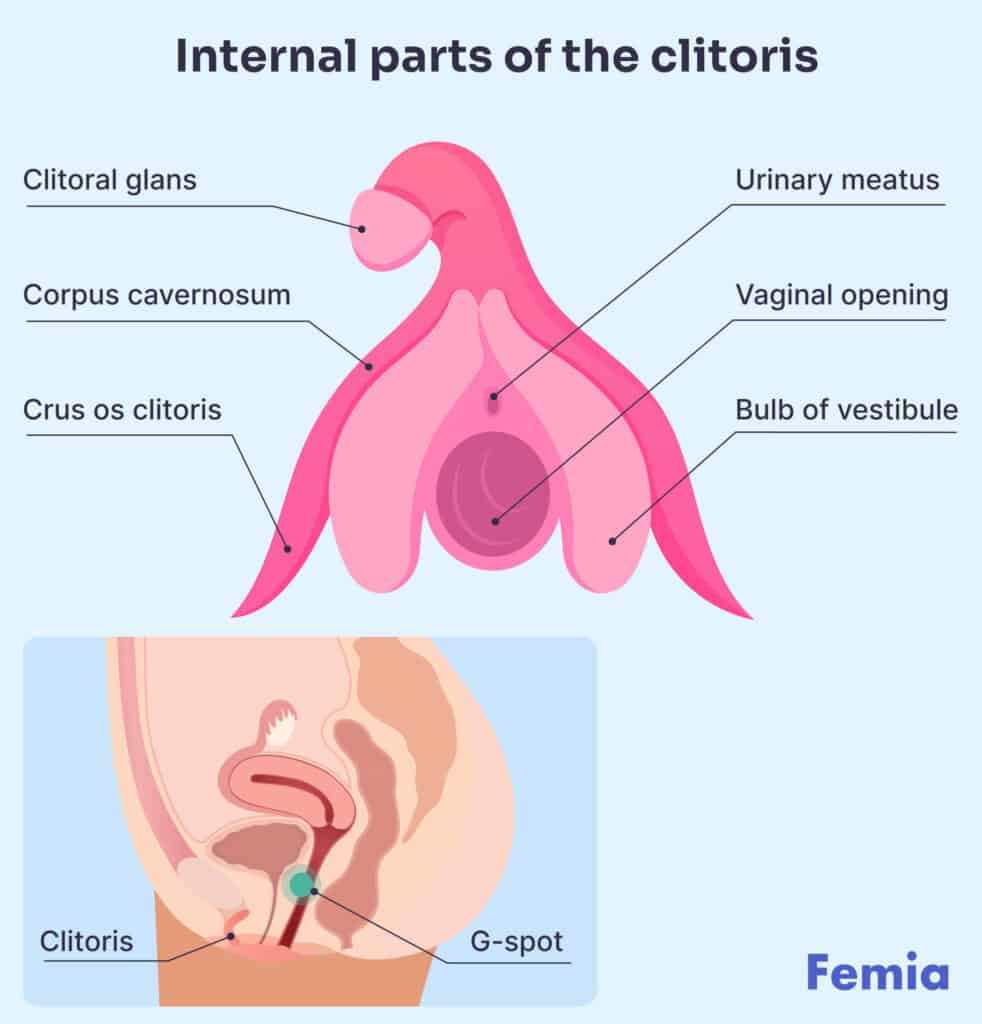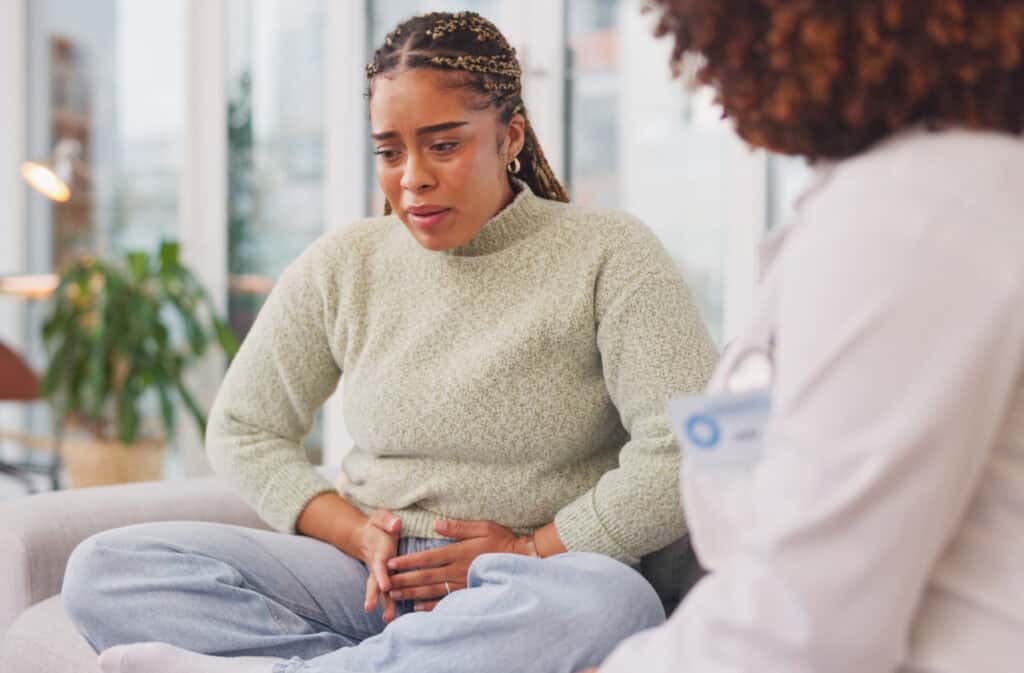Femia > Health Library > Your cycle > Sex > Best orgasm guide: Expert tips for intense and satisfying female pleasure
Best orgasm guide: Expert tips for intense and satisfying female pleasure

- Updated Mar 2, 2025
- Published
CRAFTED BY HUMAN
Crafted by human At Femia, we provide accurate and up-to-date information at every stage of your journey, from trying to conceive, pregnancy and postnatal support. All content is created by a real person based on in-depth research and own professional experience. Femia ensures that you will receive expert advice, strict accuracy and a personalized approach from our authors/medical experts. Learn more about our editorial policy.
FACT CHECKED
Fact checked At Femia Health, we maintain the highest standards of editorial excellence in delivering content focused on helping you conceive, guiding you through pregnancy, and supporting you postpartum. Explore our content review principles to learn how we ensure the accuracy and quality of our health and lifestyle tips for every stage of your journey.
Achieving your best orgasm involves knowing your body and giving new things a try. There are several methods you can consider, including:
- Avoiding vibrators for better sensitivity
- Including sex toys with lube
- Experimenting with foreplay
- Realizing sexual fantasies and scenarios
- Switching sex positions
- Trying edging
Orgasms come in all different shapes and sizes — some are small, others are large, some come with more intense releases. And since the female orgasm tends to be more difficult to achieve than male orgasm, it can be hard to pinpoint exactly what you need to achieve it and how to make it more intense.
Strong orgasm also helps improve health, including sleep quality, and immune health, relieve stress, and may help reduce some pain. Aside from that, orgasms help you explore your erogenous zones and find new pathways to pleasure.
With help from doctors, here is everything you need to know about how to cum harder. So let’s get to it!

Understanding the female orgasm
Orgasm is one of your body’s responses to reaching the height of sexual arousal (also known as being turned on). The orgasm causes the uterus and muscles of the pelvic floor to contract rhythmically to deliver pleasure for women.
How strong orgasm intensity is will vary from person to person. Often you can feel a throbbing, twitching, tensing, or spasms in your vagina and anus (even in the case of a clitoral orgasm). Some women report that their whole bodies feel the sensation during these orgasmic contractions.
Orgasms don’t happen out of the blue. In contrast, the way to orgasm can be felt like waves (some women describe it like that), a buildup of pleasure, and sexual tension. Since orgasm is just one part of the body’s sexual response cycle, let’s quickly go through different phases to know how to have a good orgasm:
Desire
That’s when you want to be intimate with your partner. At this stage, you may feel a quicker heartbeat and increased blood flow to your vagina.
Feeling turned on
Breathing, heart rate, and blood pressure will continue to increase, and you may also start feeling your intimate parts becoming more sensitive.
Orgasm
When you orgasm, the muscles in your vagina, anus, and uterus will contract, causing a squeezing sensation.
Resolution
After an orgasm, you may feel relaxed, satisfied, tired, and sleepy. Your heart rate, blood pressure, and breathing get back to normal. The vagina may feel extremely sensitive and uncomfortable to touch. Some women may be ready for a new orgasm within a few minutes after the first one, while others may need more time or just prefer to enjoy the one for the night.
Types of orgasms
1. Clitoral orgasm
This is one of the most common types. It occurs when the clitoris – a highly sensitive organ with thousands of nerve endings – is stimulated.
Clitoral orgasm is often described as sharp and intense. These usually come on quickly and are centered on external sensations. There are some factors that may affect how intense orgasm is, like the level of arousal and stimulation method.
👉Find out more: Clitoral stimulation: A guide to finding and pleasuring the clitoris for ultimate satisfaction
2. Vaginal orgasm
Although this one is often called vaginal, it is actually still a clitoral orgasm. According to sexologist and author Dr Vivienne Cass, there is only one “orgasm response” in women. However, there are different ways in which a woman will experience it. She says that there is not a separate thing called a “vaginal orgasm.” This term is used to describe the orgasm some women experience from penetration of the vagina.
The clitoris is larger than most people think. Its external part you can see (glans) looks like a tiny nub of flesh that’s hooded (clitoral hood) and surrounded by inner vaginal lips. The clitoris extends deeper inside the body, wrapping around the vagina and the urethra. Both parts of the clitoris are made of erectile tissue, which swells with blood when a woman experiences arousal.

During stimulation of the G-spot, located on the front wall of the vagina, about 1-2 inches inside, between the vaginal opening and the urethra, you may also experience another type of vaginal orgasm called squirting. Although often confused with urination, it is different, as it comes from the bladder and contains urine components and secretion from Skene’s glands.
3. Blended orgasm
Blended orgasm is what the name implies – it occurs when clitoral and vaginal orgasms happen together, blending internal and external stimulation. Since sensation combines two types of stimulation, this one is often considered the best way to orgasm.
4. Anal orgasm
Anal orgasms are less common and achieved through stimulation of the anal area or nearby erogenous zones. This orgasm is described differently from classic ones, with sensations often spreading through the body in a diffuse, unexpected way.
How to have the best orgasm: Tips and techniques
Even if you already enjoy the orgasms you have, you may also want to consider experimenting and improving your orgasms. Here is what you can do about it:
1. Explore yourself
This is the first step in how to have the best orgasm, whether you can’t finish or just want to make it better. It’s important to know your body, what you like and what you don’t, how you finish, and what affects an orgasm. That is why it is best to avoid vibrators for some time, to explore yourself with your hand, and to identify the most pleasant areas, movements, and pressure.
2. Avoid vibrators and explore other sex toys
Constant use of vibrators reduces your sensitivity, so it would be harder to finish with a partner. Even if you finish, you will unlikely achieve a strong orgasm. That’s why it’s best to avoid using vibrators for at least some time to test if something has changed. You can continue masturbating using your or your partner’s hand.
However, there are many other toys that may help you achieve higher satisfaction. For example handcuffs, nipple clamps, rings and whips. Although it’s best to avoid vibrators when masturbating alone, you can consider using them while your partner penetrates you for a higher chance of a blended strong orgasm.
3. Test sexual fantasies
Fantasies are a great tool for reducing stress and thoughts that make it harder to finish. Mental arousal plays a crucial role in how sex goes. Consider exploring fantasies with your partner. Perhaps you’ll find something that the two of you really enjoy.
Even if there are certain things that you choose not to do, for example, watching porn videos, there may be something else you’d like, such as roleplaying. Try to find something that turns you on, and you can either add it to your masturbation routine or to sex with a partner.
Some people like to masturbate in front of a mirror, while others like heating and cooling sex oils. Some have fantasies about different sex scenarios, where you can mix gentle and hard approaches for a strong orgasm.
4. Don't skip on foreplay
Although some women don’t need any specific foreplay to feel aroused, it still plays a crucial role in how smooth and intense orgasm will be. Foreplay typically involves your entire body as an erogenous zone, versus, for example, jumping straight into vaginal sex.
Whether you’re having vaginal sex or easing into a different kind of sex, it’s best to first take time to make out and have your partner give attention to your neck, breasts, legs, or any other part of the body. It could be touching or licking; you can play with hot/cold oils, or receive a massage to help you relax. Some like to close their eyes to make the feelings more intense, others prefer to keep them open. It’s all up to you.
5. Always communicate with your partner
Your orgasm is your responsibility, meaning you might have to tell your partner what you like and what you want. People can’t read each other’s minds, so take time to discuss with your partner what you’ve learned about yourself and what you would like to try. You may even find that your partner also has fantasies or suggestions during the dialogue, so you may try something new together after a discussion.
6. Switch up your sex positions
Women having an orgasm from penetration can consider changing sex positions. Switching positions can make sex more fun and add variety and depth to your pleasure, leading to a strong orgasm and improved overall experience. Trying something new may also hit different areas of your body with sexy attention so you work toward a better finish.
7. Give edging a whirl
Edging is a term used to describe a tactic where you delay an orgasm when it is really close. For example, a partner uses a sex toy or fingers on you. You can identify where you are close to an orgasm and ask your partner to stop and wait for a few seconds before getting back. Repeat it a few times and let the partner continue for you to finally finish – this practice has been shown to help achieve best orgasm.
8. Try the G-spot stimulation
The G-spot is a spongy tissue inside your vagina along the front wall. Stimulating this tissue can feel really good for some women. It’s best to ask your partner to use fingers as it will be easier for them to find it and stimulate the proper area. You can also try finding the G-spot by yourself and testing out how it feels before having sex with a partner. Insert a finger or fingers a few inches into your vagina, and curl the finger(s) in a come-hither motion toward the front wall of the vagina.
9. Try massage and exercise to strengthen the muscles
It’s common for a woman’s pelvic floor muscles to become weaker over age, after extreme physical activity, and after birth. So you may want to consider trying Kegels exercises and pelvic floor massage to make your muscles stronger, which can aid in how intense orgasm is.
10. Try sensate focus: Exploring pleasure without pressure
Sensate Focus is a technique often used in both solo and partnered exploration to help people reconnect with their bodies and experience pleasure without the pressure of achieving orgasm. Originating from sex therapy, this method encourages slow, intentional touch to build awareness and enjoyment of sensations rather than focusing on performance or climax. By gradually exploring different types of touch—starting with non-genital areas—Sensate Focus allows you to discover what feels pleasurable in a relaxed, pressure-free environment.
Using Sensate Focus can deepen intimacy and help you tune into your own body, creating a fulfilling experience based on personal and shared sensations, rather than chasing a specific outcome.
👉Find out more: Understanding female libido: Signs of a high sex drive in women
Best ways to orgasm: Solo vs. partnered
When it comes to reaching orgasm, both partered and solo experiences offer benefits. Here is a quick overview of each method:
Solo exploration
Masturbation or mindful self-touch is an excellent way to discover your personal preferences and learn more about yourself. Solo orgasm is easier for most women, especially when trying something new because it doesn’t involve pressure to please a partner. This self-exploration allows for a relaxed approach, and then you can consider bringing new things into partnered sex.
Partnered sex or masturbation play
This, in contrast, adds layers of intimacy and shared pleasure, allowing for more interesting things to try. Sex with people you love tends to be more intense and emotional, which also aids in how strong orgasm is.
There is no objectively “better” in these two choices. Solo exploration should always have a place as a way to know yourself better, while partnered sex offers a collaborative experience where people explore mutual pleasure, try different techniques, and respond to each other’s wishes.
How to have best orgasm: Addressing common issues
Achieving orgasm can, in general, feel like a challenge for some women. There are many factors that affect whether you finish or not and how intense orgasm is. Let’s explore some effective ways to overcome the most common issues for a more pleasurable experience:
- Consider possible medication side effects: Some medications, especially selective serotonin reuptake inhibitors (SSRIs), can affect sexual response by making it more difficult to reach orgasm. If you’re taking any medications and experiencing difficulties, consult your doctor to see if there are options to adjust your treatment or consider alternatives.
- Try reducing stress and practicing mindfulness: stress, chores, and work problems could be severe blockers of sexual satisfaction. When cortisol (stress hormone) is high, you may experience difficulties in reaching orgasm. Consider practicing mindfulness, yoga, speaking to friends, getting enough sleep, eating healthier, and walking 30 minutes a day to reduce stress.
- Try building self-confidence: feeling insecure can make it harder for you to experiment and try new things, which is often crucial in increasing your sexual satisfaction. Try working on your body positivity, as it can help you build confidence and relax so that you enjoy the moment. Consider therapy, speaking with your partner about your insecurities, masturbating in front of a mirror and using affirmations, and generally focusing on what you love about your body for a strong orgasm.
- Communicate openly with your partner: open and honest communication is key for a healthy relationship and the same applies to sex. It’s essential to share what you like, don’t like, and what you want. Take your partner’s hand to show them where to touch and how. Share insights from your solo experiments and try something new together.
Myths vs. reality: Extreme orgasm and misconceptions
It is a common belief that orgasm itself is the only way to finish sex, so it should be necessary.
In addition, there is no shortage of myths around the idea of “extreme orgasm,” where people think that reaching intense or frequent climaxes is essential for a fulfilling sex life. This misconception not only creates unnecessary pressure but also leads many to believe that there is a universal standard for when and how women should finish.
In reality, sex is considered fulfilled when you feel it is. There is no need to have an orgasm each and every time. It is great when you do, but there is no need to add pressure to your intimate moments.
Each woman’s body is unique, so there is no one way to finish. If someone has a vaginal orgasm – that doesn’t mean you should too. Listen to your body, and instead of focusing on what is common, find what works specifically for you and for your pleasure. That’s it.

Questions from the Femia community
Can pelvic floor exercises really improve my orgasm?
Yes, strengthening your pelvic floor muscles with Kegels exercises can increase the intensity of orgasms by improving muscle control.
Is it normal not to orgasm during penetration?
Yes, the majority of women require clitoral stimulation to have an orgasm. So, penetration alone will not be enough for many. Consider penetration with added clitoral stimulation, either with your partner's hand or a vibrator/dildo toy.
Are there foods or supplements that can make orgasms better?
While there is no guarantee that food will help you reach a better orgasm, staying hydrated and consuming a balanced diet helps improve libido, sexual health, and energy levels and may help you feel more involved in sex.
The bottom line
Achieving the best orgasm is a journey of self-discovery, requiring an understanding of one’s own body, a willingness to experiment with various techniques, and attention to any factors that might impact pleasure, like stress or physical discomfort. Taking time for self-exploration is key; understanding your own desires and responses can help create a foundation for satisfaction.
Open communication with partners is also essential, as sharing what works for you is often the best way to orgasm and increase intimacy. Remember, each person’s experience with orgasm is unique – what matters most is finding what brings you the most satisfaction and comfort.
References
- “Orgasm: What Is an Orgasm, Types of Orgasms & Health Benefits.” Cleveland Clinic, my.clevelandclinic.org/health/articles/22969-orgasm.
- Killeen, Jessica. “Can Orgasms Impact Your Health?” Avant Gynecology: Atlanta’s GYN and Surgical Specialists, 17 June 2020, www.avantgynecology.com/2020/06/17/learn-about-the-health-impacts-of-orgasms/.
- “Clitoris: Anatomy, Location, Purpose & Conditions.” Cleveland Clinic, 25 Apr. 2022, my.clevelandclinic.org/health/body/22823-clitoris.
- Australian Broadcasting Corporation. “Is There Really a Vaginal Orgasm?” Health & Wellbeing, 27 Oct. 2014, www.abc.net.au/health/features/stories/2014/10/28/4116350.htm. Accessed 30 Oct. 2024.
- Femia. “Understanding Squirting: What It Is, What It Feels Like, and How to Do It.” Femia Health, 23 July 2024, femia.health/health-library/your-cycle/sex/what-is-squirting/, https://doi.org/10.1111/j.1464-410X.2012.11562.x. Accessed 30 Oct. 2024.
- Femia. “Pelvic Floor Massage 101: How to Relieve Pain and Improve Function.” Femia Health, 14 June 2024, femia.health/health-library/your-cycle/health/pelvic-floor-massage-101-how-to-relieve-pain-and-improve-function/. Accessed 30 Oct. 2024.
- Smeaton, Jaclyn. “The Sex and Stress Connection.” DUTCH Test, 18 Jan. 2023, dutchtest.com/blog/the-sex-and-stress-connection/. Accessed 30 Oct. 2024.
- Femia. “Reverse Kegels: What They Are, How to Do Them, and Their Benefits.” Femia Health, 26 June 2024, femia.health/health-library/your-cycle/health/reverse-kegels/, https://doi.org/10.1016/j.jrras.2023.100713. Accessed 30 Oct. 2024.

Vaping is still quite new, so we don’t yet know all the risks of vaping while pregnant. Find out why vaping during pregnancy isn’t advised and how to quit for good.

At 9 weeks pregnant, your baby is now moving and growing fast! Find out about symptoms, baby size, and how to care for yourself this week.

Learn about missed miscarriages, including common causes, symptoms and management options. Understand the causes and how to support your physical and emotional recovery.

